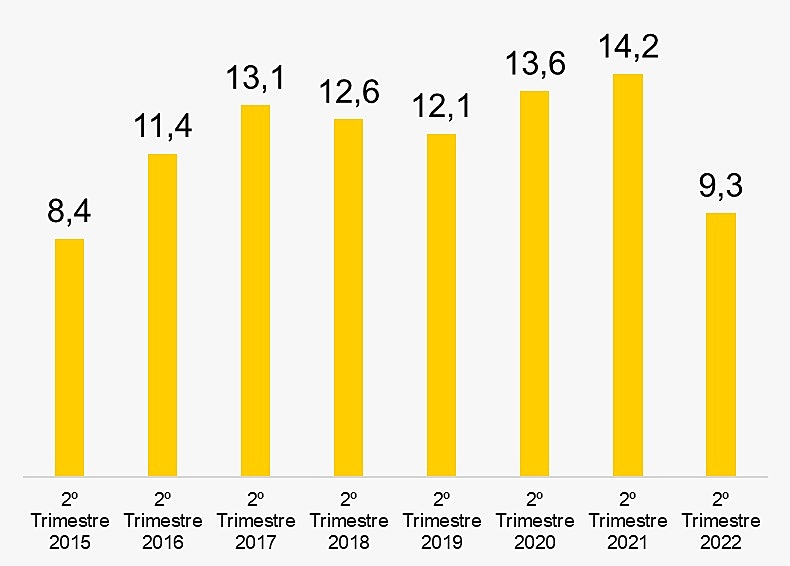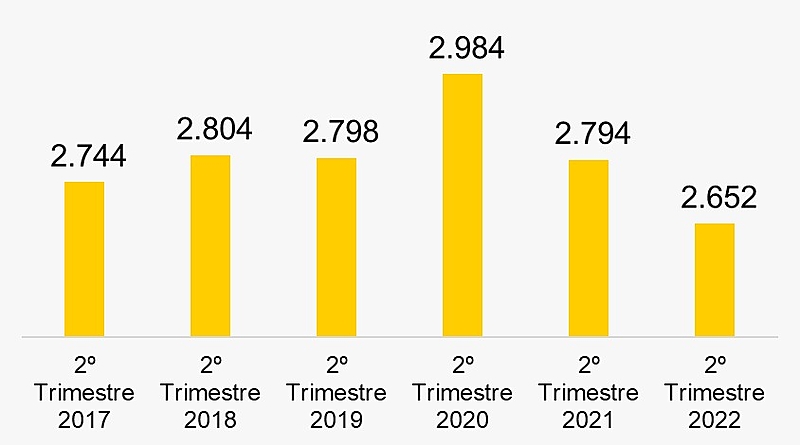Labor reform completes five years with worsening jobs and promise of revision
Ver no Brasil de Fato
On November 11, 2017, Brazil’s Labor Reform was approved, on November 11. Proposed and approved during the government of former President Michel Temer (Brazilian Democratic Movement, also known as MDB), the change in the country’s labor legislation reduced employees’ rights and contributed to a decrease in their income. That is why it will probably undergo a revision during the next government.
President-elect Luiz Inácio Lula da Silva (Workers’ Party) promised, in a letter made public days after the second round, to build new labor legislation that “guarantees minimum rights – such as labor and social security rights – and salaries for a dignified life.”
The purpose of the 2017 Labor Reform was precisely to eliminate workers’ rights from the law in order to reduce employers’ costs in hiring employees and generate up to 6 million jobs. It never happened.
According to lawyer Ricardo Mendonça, Ph.D. in Legal and Political Sciences at Pablo de Olavide University, Spain, the reform ended up worsening labor relations and encouraging outsourcing.
It also made it more difficult for workers to access the Labor Court, reducing the free access to courts and even establishing that employees must pay employers back when they do not win a legal case.
Lastly, it reduced the power of the unions in negotiations and also compromised the financial sustainability of these entities, taking from them, for example, the amount that was collected through the union tax.
“All of these measures aimed at reducing workers’ rights and increasing profit margins for business owners,” Mendonça said. The result was unemployment, informal jobs, and income concentration.
Figures confirm the failure
To Patrícia Pelatieiri, deputy director of the Inter-union Department of Statistics and Socioeconomic Studies (DIEESE, in Portuguese), data collected by the Brazilian Institute of Geography and Statistics (IBGE, in Portuguese) confirm the consequences of the Labor Reform.
She recalled that in the second quarter of 2017 – that is, before the Labor Reform –, a Brazilian worker received an average of 2.744 reais (inflation-adjusted values). Five years later, in the second quarter of 2022, a Brazilian worker received 2.652 reais.
Average income of the Brazilian worker. Data from Pnad/IBGE. Trimestre = quarter. Designed by: Dieese / Reproduction
She also mentioned that, from 2017 on, Brazil’s unemployment rate fell. However, it is above what was recorded ten years ago. And this drop should not necessarily be seen as something entirely positive for workers.
“Many workers were pushed to informal jobs, which skyrocketed this year, reaching 39.3 million people”, she said.

Brazil’s unemployment rate. Trimestre = quarter. Data from Pnad/IBGE. Designed by: Dieese / Reproduction
According to IBGE, about 39% of Brazilian workers are informal workers. Today, they are a group larger than the employees who work for the private sector on the books: 36.3 million people, according to official records.
“The reform failed because what increases the number of jobs is economic growth”, said economist David Deccache, advisor to the Socialist Party and Director of the Institute of Functional Finance for Development (IFFD). “What increases [economic] growth is public investments, which have decreased in recent years.”
Reversion Expectation
Deccache advocates for a revision of the reform and says that it is indeed possible during Lula’s next term. According to him, the former president was reelected with the promise to review reform. To make it happen, union entities must mobilize to exert pressure.
Pelatieiri also thinks it is possible to revise the Labor Reform and hopes that it will be proposed early in the next government, when, historically, the newly elected president enjoys greater political prestige. According to her, the revision would help the country identify the types of jobs it wants to create in the future.
“The only way to create jobs is through economic growth,” she said. “But not every type of economic growth leads to jobs. It takes intentionality to create high-quality jobs.”
Pelatieri believes Brazil needs to rethink the precariousness of employment agreements created by the reform. She also defended the importance of determining salaries and other rights to be returned to collective agreements.
The Spanish example
Pelatieri recalled that Spain had achieved positive results in 2021, after reversing the 2008 and 2012 Labor Reforms.
In August, Brasil de Fato published a story on the Spanish counter-reform. Until July 2022, the number of unemployed workers had fallen from about 3.1 million to 2.9 million.
In July 2021, about 3.4 million people were unemployed in Spain.
Both Pelatieiri, from Dieese, and Mendonça suggest that Spain should be seen as an example for Brazil in the eventual revision process. “It is necessary to build again an environment of social inclusion through work”, said Mendonça.


































